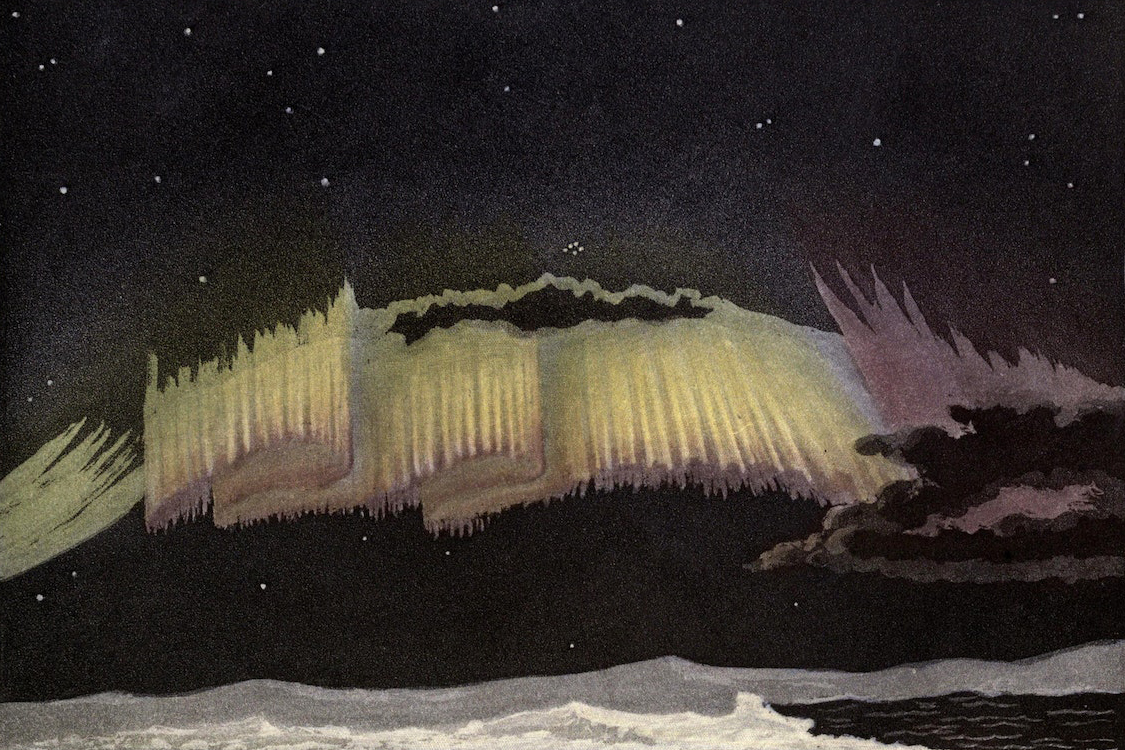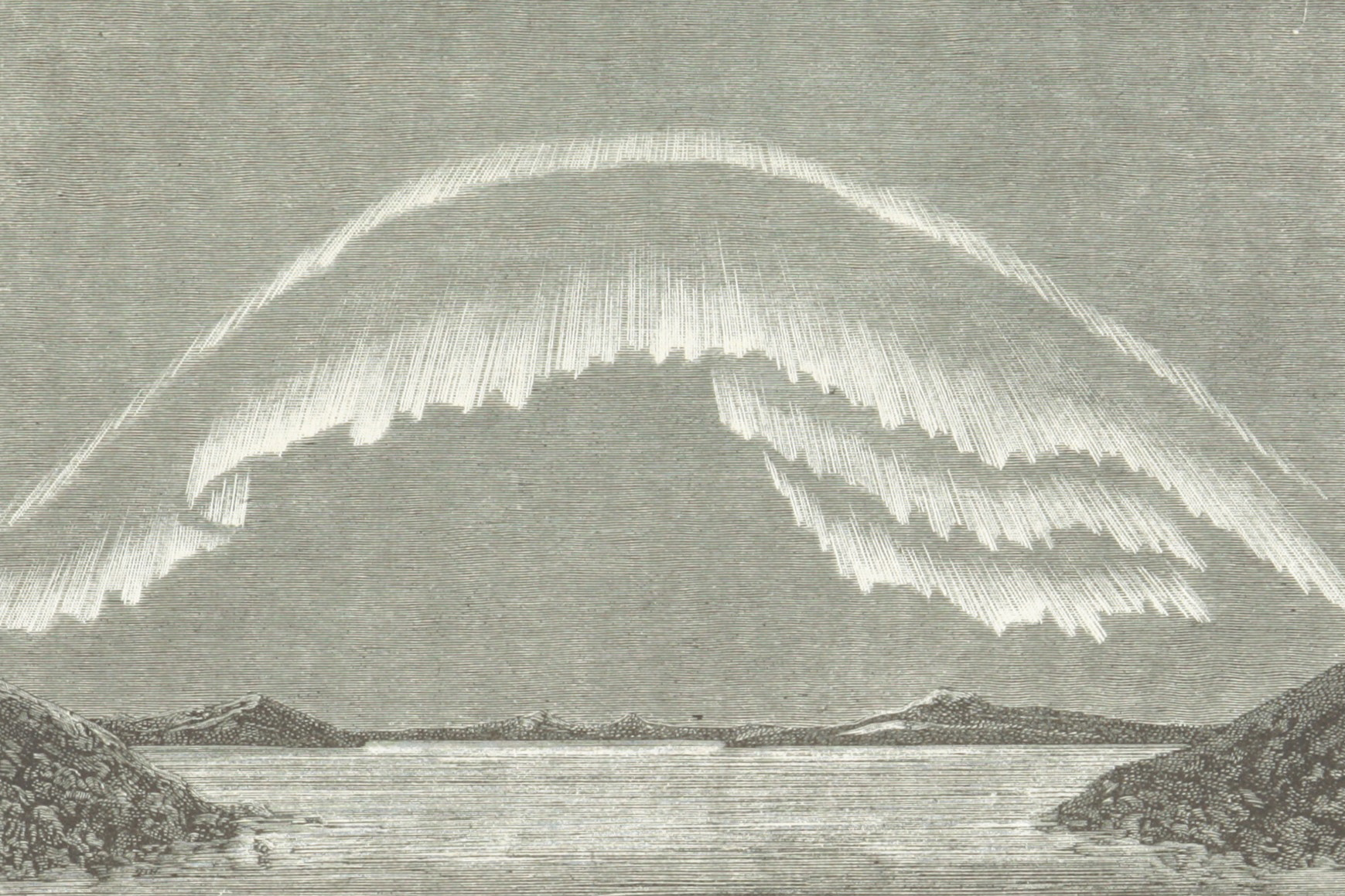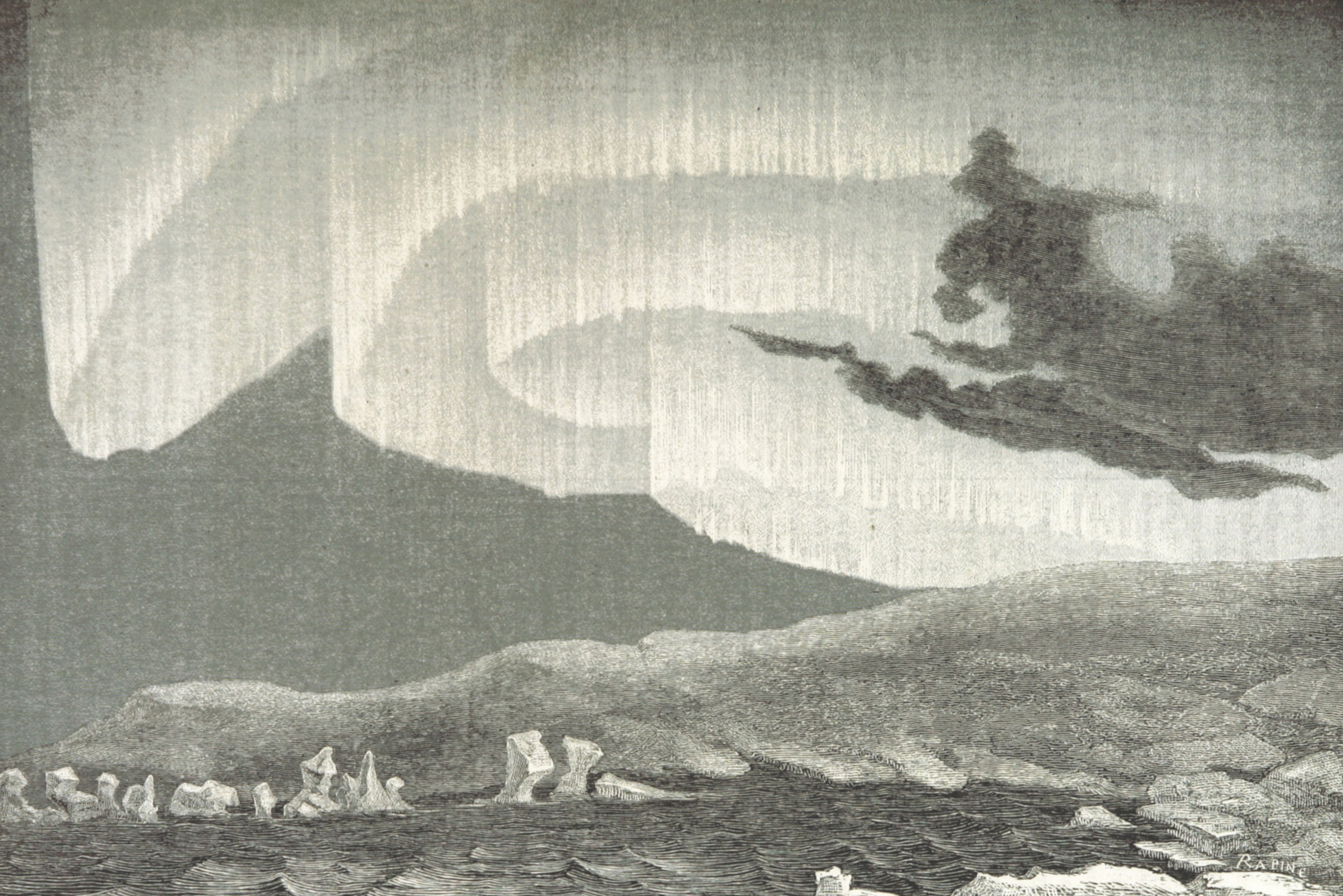
An aurora, sometimes referred to as polar lights, northern lights aurora borealis, or southern lights aurora australis, is a natural light display in the Earth's sky, predominantly seen in the high latitude regions.

Auroras are the result of disturbances in the magnetosphere caused by solar wind. These disturbances are sometimes strong enough to alter the trajectories of charged particles in both solar wind and magnetospheric plasma. These particles, mainly electrons and protons, precipitate into the upper atmosphere.

The resulting ionization and excitation of atmospheric constituents emit light of varying color and complexity. The form of the aurora, occurring within bands around both polar regions, is also dependent on the amount of acceleration imparted to the precipitating particles. Precipitating protons generally produce optical emissions as incident hydrogen atoms after gaining electrons from the atmosphere. Proton auroras are usually observed at lower latitudes.

The word aurora is derived from the name of the Roman goddess of the dawn, Aurora, who travelled from east to west announcing the coming of the sun. Ancient Greek poets used the name metaphorically to refer to dawn, often mentioning its play of colours across the otherwise dark sky.

Most auroras occur in a band known as the auroral zone, which is typically 3° to 6° wide in latitude and between 10° and 20° from the geomagnetic poles at all local times, most clearly seen at night against a dark sky. A region that currently displays an aurora is called the auroral oval, a band displaced towards the night side of the Earth. Early evidence for a geomagnetic connection comes from the statistics of auroral observations.

In northern latitudes, the effect is known as the aurora borealis or the northern lights. The former term was coined by Galileo in 1619, from the Roman goddess of the dawn and the Greek name for the north wind.The southern counterpart, the aurora australis or the southern lights, has features almost identical to the aurora borealis and changes simultaneously with changes in the northern auroral zone. The aurora australis is visible from high southern latitudes in Antarctica, Chile, Argentina, New Zealand, and Australia.